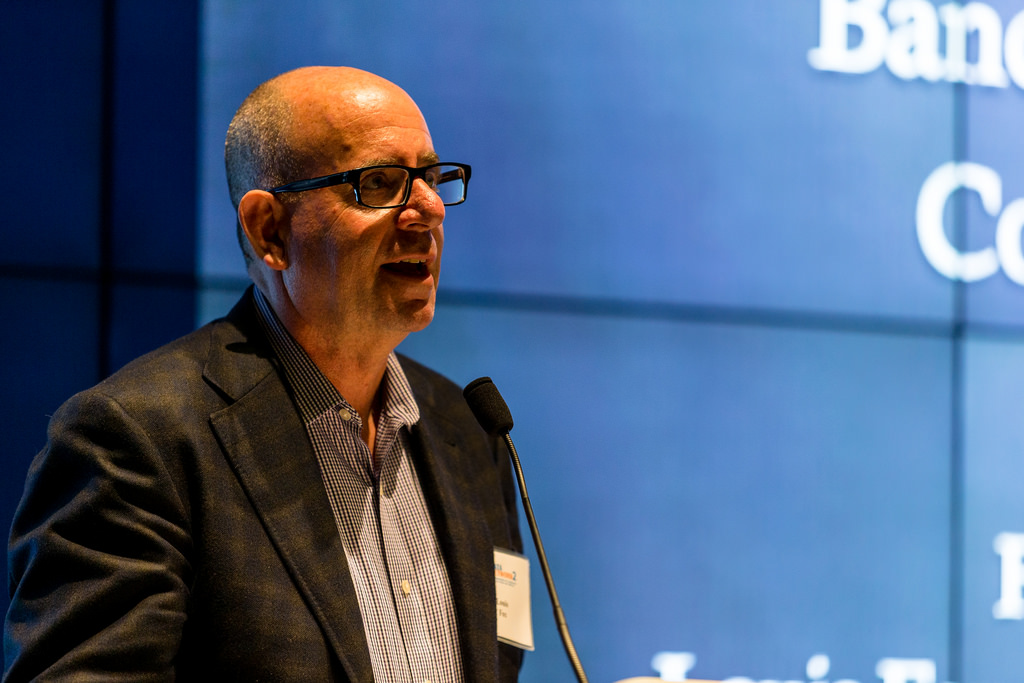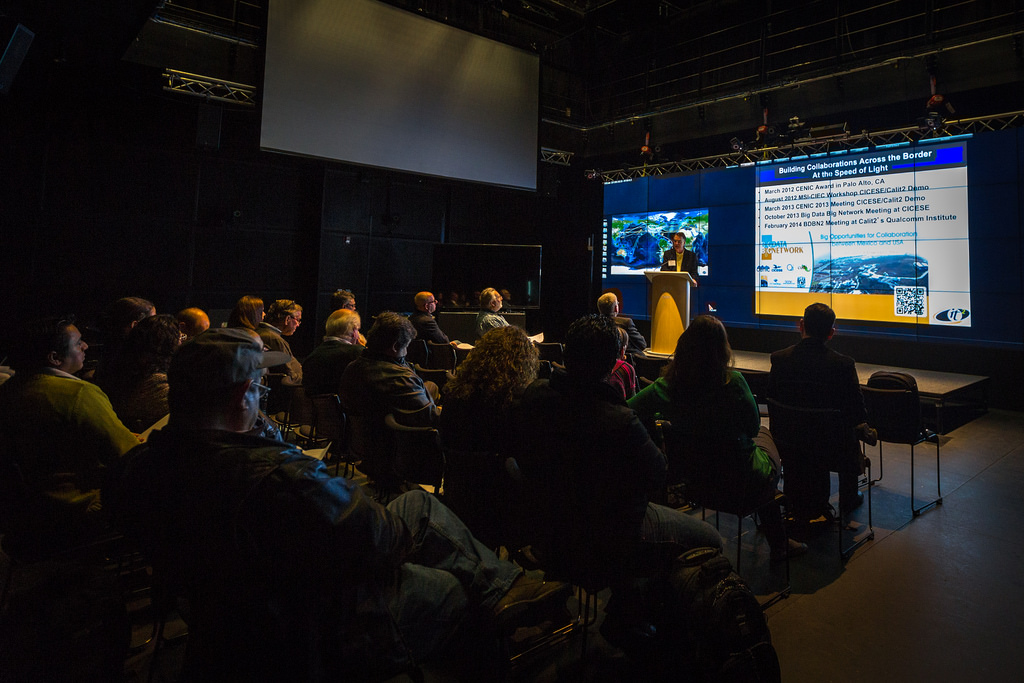Second 'Big Data Big Network' Workshop Explores Cross-Border Collaboration at Light-Speed
San Diego, Calif., Feb. 19, 2014 – Data generation doesn’t stop at the U.S.-Mexico International Border, and neither should data-sharing.
|
That’s the battle cry of sorts for a group of representatives from academic institutions on both sides of the border, who met recently at the University of California, San Diego’s Qualcomm Institute (QI) for the second “Big Data, Big Network” meeting, a two-day invitational workshop held Feb. 10-11 at QI, which is the UC San Diego division of the California Institute for Telecommunications and Information Technology (Calit2). Although the physical border adds hours to drives between Southern California and Baja California researchers, using optical fiber to connect their labs cuts collaboration times to milliseconds.
The goal of the BDBN2 workshop was to enhance and bolster these collaborationsby way of high-speed 10 Gigabit/second (Gbps) networking and high-resolution display walls, both of which are increasingly used in fields of research (e.g., astrophysics, genomics, geosciences) that require the analysis of massive datasets – datasets that are often distributed around the globe.
This so-called “big data” requires “big pipes” (i.e., networking capability) in order for collaborators to access and share it, and visualizing such data is made easier by the types of high-resolution tiled “OptIPortal” display walls – such as the VROOM, WAVE and TourCAVE – that are a major area of research and development at the Qualcomm Institute.
Attendees at the workshop included representatives from Mexico’s Centro de Investigación Científica y Educación Superior de Ensenada (CICESE, the Ensenada Center for Scientific Research and Higher Education), and the Corporación Universitaria para el Desarrollo de Internet (CUDI, the University Corporation for Internet Development). CUDI is the Mexican equivalent of the Internet2 network in the U.S.).
From the U.S. side, attendees included Calit2 Director Larry Smarr and representatives of the Corporation for Education Network Initiatives in California (CENIC). CENIC owns and manages the 3,800-mile advanced network used by 10,000 California research and education institutions and some ten million Californians daily. The San Diego Supercomputer Center and its Graduate School for International Relations and Pacific Studies also played important roles.
"It was very gratifying after a dozen years of preparations and meetings to see at the conference the routine use of the 10Gbps optical link between CICESE and Calit2's Qualcomm Institute,” said Smarr. “The next stage is bringing more and more application teams onto the Big Data Freeway which now connects San Diego with Baja California."
Adds CENIC President and CEO Louis Fox: "CENIC connects not only California's research and education communities with one other but also with collaborators around the world. Given Mexico's proximity and the amount of data-intensive research taking place in the research labs and universities south of the border, cross-border high-performance connectivity is an absolute must.
"This workshop is a perfect showcase of what is currently being done over the existing high-performance links in disciplines like disaster response, ocean studies, and seismology," Fox ontinued, "as well as how those links must continue to grow to ensure that the connectivity to and within Mexico keeps pace with the needs of 21st century innovation."
BDBN2 is a follow-up to the workshop held last October in Ensenada at CICESE, which focused on enhancing cross-border science and engineering research and education applications enabled by the AmLight West cross border gateway to the] Tijuana-Ensenada 10GigE network, operated by CENIC and CUDI, respectively.
|
Last week’s workshop included hands-on training and technology demonstrations of applications and science drivers that benefit from advanced cyberinfrastructure. Included among them were talks by the U.S. Geological Survey’s Elizabeth Cochran on “Advanced National Seismic System Earthquake Monitoring”, San Diego State University Professor Eric Frost on “Extending the Internet Metaphor for Trade Optimization and Disaster Response Linking Mexico and the U.S.
"When you look at maps of where earthquakes or where other disasters happen, they often don’t stop at the borders,” said QI Research Project Manager Joe Keefe, who was responsible for handling many of the technology demos at the workshop. “One of the goals of this collaboration is to get a high-speed, reliable network in place where people can share data effectively, so we can see where challenges and threats lie across our borders.”
The workshop also included a cross-border talk including Caltech’s Joann Stock and her colleagues from CICESE, Arturo Martin Barajas and Alejandro Hinojosa on “Collaborative Interactive Analysis of LiDAR Data.” UCSD Professor Chaitan Baru gave the keynote presentation on “Big Data and Fat Pipes: Building a Shared Infrastructure for Data Research at Scale.”
The next step for the BDBN community is to upgrade the available AmLight West link connecting CICESE and CENIC – and through it UCSD – so that its bandwidth exceeds 40Gbps and eventually even 100Gbps. This will make the binational “OptIPuter” system (an optical network of connected storage servers and tiled display walls) even more computationally powerful. The first node to be outfitted with a 40Gbps switch will be the QI WAVE.
Another planned collaboration between Keefe and Jose Lozano Rizk at CICESE will eventually produce a collaborative, multi-terabyte data storage structure mainly geared toward visualization. The structure will allow the same large datasets to be stored on two separate servers to promote easier collaboration and more secure storage. The collaborative storage will start at 25 Terabytes – enough storage for almost half of the data collected by the Hubble Space Telescope in its first 20 years of observations – and the storage will continue to grow steadily.
Related Links
Media Contacts
Tiffany Fox, (858) 246-0353, tfox@ucsd.edu


